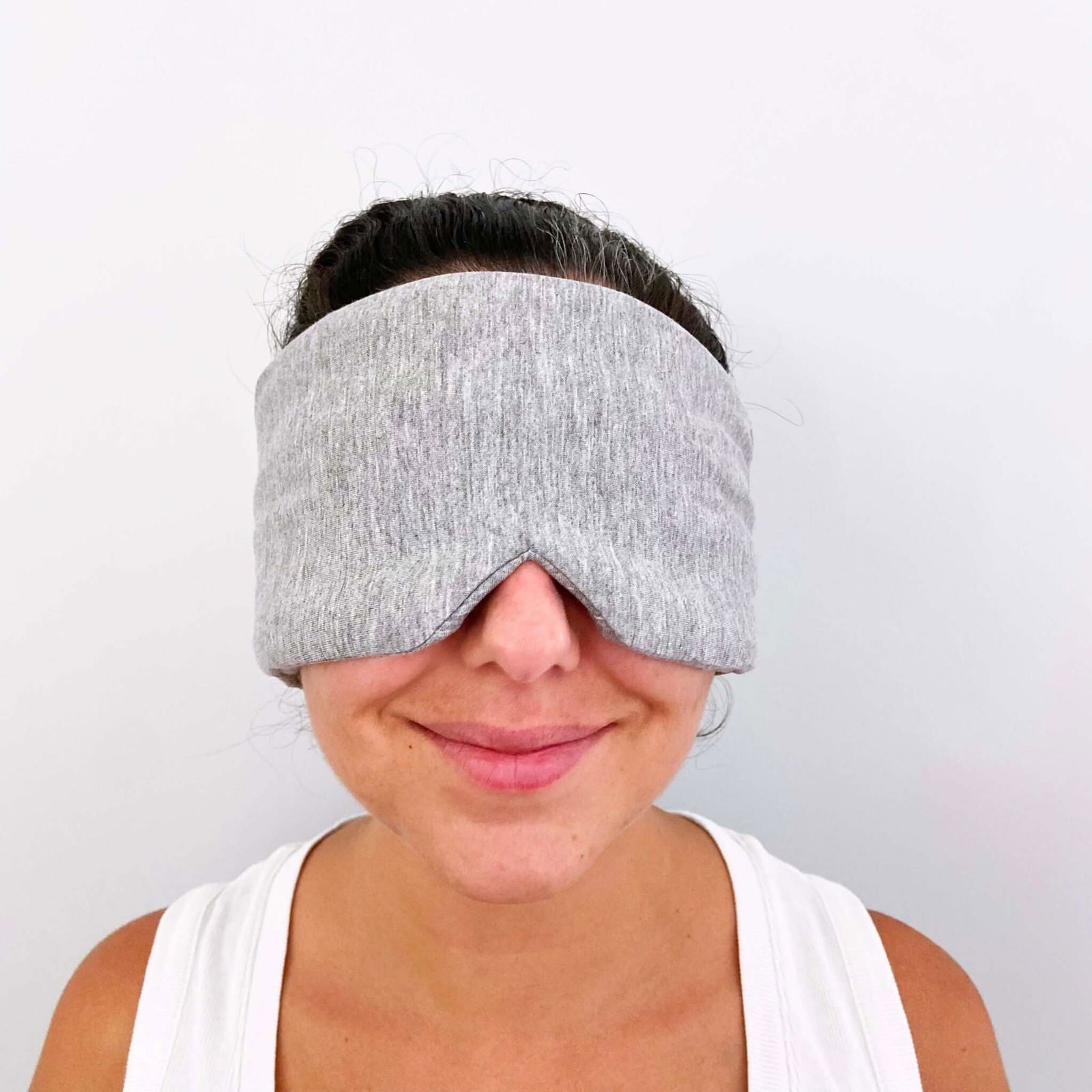Cell phones can be beneficial for children. They can help them learn and grow. And they allow your kids to stay in touch which you, which is great for their safety. But these benefits don’t come for free. They come with the price of your kid’s physical and mental health, say experts.
So how can you protect them, especially since taking cell phones away from them may not be an option in most cases?
The answer is to find better alternatives.
There are many apps and games available on the internet that work without internet connectivity. All you need to do is install them on your child's phone, turn on airplane mode, and voila, no more EMF emissions from the device.
This post will look at some of the well-known offline apps and games and discuss several other important topics to help you make the relationship between your kids and modern technology safer. So, let’s begin.
EMF’s Biological Effects are More Severe on Kids
We all know that prolonged exposure to EMF has severe biological effects on humans. But we often miss the fact that the intensity of those effects is greater in children than in adults.
That’s because:
- Children’s skulls are thinner, and their brains are smaller and wetter than that of adults
- Their bodies are growing very fast
- And they’re obviously younger, which means their bodies haven’t had the time to build the necessary defenses
Here are some EMF-induced health effects that scientists have reported to be more common and aggressive in children.
Childhood Leukemia
A research study by the Washington State Department of Health, conducted in 2000, found a growing trend of leukemia development in children exposed to EMF at home.
Dr. Milham, the lead researcher in the study, presented robust evidence of an increase in childhood leukemia, especially in children aged between 3-4 who had prolonged EMF exposure.
What’s more interesting is the rate at which this problem is growing. If you look at the statistics, you’ll find that the growth rate of childhood leukemia is significantly higher today than before the introduction of power grids.
Also, it’s virtually non-existent in parts of the world, like sub-Saharan Africa, that remain off the grid.
Confirming these findings, another study by Dr. Devra Lee Davis published in 2013 also says that,
“No other environmental carcinogen has produced evidence of an increased risk in just one decade.”
Cognitive Decline
Though cancer is a highly concerning health risk, it’s not the only class of adverse effects linked to EMF exposure in children.
A research from the University of Helsinki in Finland established that prolonged exposure to EMF makes subtle changes in brain function. This can cause severe cognitive decline and interfere with other brain functions.
For this study, the researchers asked fifteen children to perform auditory and memory functions. At the same time, they exposed some of the children to cell phone radiation.
They concluded their study by saying,
“EMF emitted by mobile phones has effects on brain oscillatory responses during cognitive processing in children.”
Memory Loss
A relatively recent study by the Swiss Tropical and Public Health Institute suggested a strong link between prolonged EMF exposure and declined memory performance in teens.
For their study, the researchers analyzed the samples from around 700 Swiss teenagers to understand how the teens’ brains were developing. They tracked EMF exposure and memory performance for over a year.
They concluded their study by saying:
“Cumulative RF-EMF brain exposure from mobile phone use over one year may have a negative effect on the development of figural memory performance in adolescents.”
Another 2017 study also says prolonged cell phone usage “has a significant negative impact on working memory performance.” The researchers also found that “the effect is apparent even for a 5-minute use.”
ADHD
An increasing number of research studies have identified a strong link between prolonged EMF exposure and ADHD (attention deficit hyperactivity disorder).
According to the American Psychiatric Association (APA):
Attention deficit/hyperactivity disorder (ADHD) is one of the most common mental disorders affecting children. ADHD also affects many adults. Symptoms of ADHD include inattention (not being able to keep focus), hyperactivity (excess movement that is not fitting to the setting), and impulsivity (hasty acts that occur at the moment without thought).
A 2008 study found that children whose mothers used cell phones heavily while they were pregnant or those who reported cell phone use by their children in their infancy were 80% more likely to have symptoms of ADHD.
Another 2017 study that reviewed the published science on the link between cell phones and ADHD concludes by saying:
“Symptoms of retarded memory, learning, cognition, attention, and behavioral problems have been reported in numerous studies and are similarly manifested in autism and attention deficit hyperactivity disorders, as a result of exposure to cell phone radiation.”

There’s More
These are just a few health problems that may arise in children after prolonged EMF exposure. There’s more. Visit my “Children & EMF Radiation” collection of posts for more information.
Besides EMF
As harmful as EMF can be, it’s not the only risk that tags along with modern tech use. How technology is designed today, the extent of our dependence on it, and the level of addiction to our gadgets—all of these factors create different effects on our health. Have a look.
Bacteria & Viruses
An article published in the Seattle Times says that your phone hosts 25,127 bacteria per square inch. That’s significantly more than:
- Toilet seat: 1,201 bacteria per square inch
- Kitchen counter: 1,736 bacteria per square inch
- Pet food dish: 2,110 bacteria per square inch
- Checkout screen: 4,500 bacteria per square inch
- Doorknob: 8,643 bacteria per square inch
Cell phones are one of the dirtiest objects we touch every day. And although our adult immune systems are good at fighting these foreign threats, they can be significantly more dangerous for children.
The No-Sleep Disorder
The LED screens on your gadgets emit something called blue light. It’s similar to the light emitted by the sun, and your brain uses it as a reference to control your circadian rhythm.
The sun rises, you see the blue light, and your brain triggers activity mode. Similarly, the sun goes down, you stop seeing blue light, and the brain starts shutting the body down for a restful night of sleep.
When we don’t stop using our gadgets after sundown, we get exposed to the blue light from our devices, and our brains can’t trigger rest mode.
This results in people having a hard time falling asleep. And, when they do drift off, their sleep quality isn't as good.
Digital Overstimulation at Night
Everything we see, hear, feel, and experience goes to our brain as chunks of data that the brain has to process.
This means that when you use your phone at night, that’s additional information your brain has to process. At that time, your brain could (and should) be slowing down and focusing on background tasks like healing tissues and detoxifying the liver.
Digital overstimulation of the brain is a major problem in the modern population. It causes us to develop problems like sleep disorders, weakened immune system, inadequate endocrine system, and weakened toxins filtration.
Kids’ Screen Time Guidelines
Although reducing EMF exposure wasn’t the basis of these limits, health organizations worldwide have set specific screen time guidelines for children. And unsurprisingly, they help with the EMF exposure as well.
Here are those guidelines.
- No screen time for kids under the age of three
- Kids aged between 3-6 should only be allowed to use a device for one hour a day, under parents’ supervision
- Kids aged 6 through 9 are allowed up to 2 hours of supervised screen time
- And finally, for kids aged 9-12, experts suggest letting them play for up to 2 hours and be sure to set no-tech family times each day.
Although being familiar with modern technology is crucial, spending tech-less time with the people around them is also vital for growing children. This helps them build emotional intelligence, confidence, self-esteem, and a ton of other things.
Besides that, as I already mentioned, it also helps keep their EMF exposure down.
You can, however, further reduce their EMF exposure levels by installing apps and games on their devices that work offline.

Apps & Games for Kids That Work in Airplane Mode
Here’s a list of some smartphone applications for kids that work offline.
Toca Life: Vacation
Toca Life is a fun offline educational application that lets kids pretend they’re on vacation. This game allows kids to explore their creativity and imagination and create different characters and stories.
They’ll feel like they’re in charge as they explore and manipulate everything on their screen while building a logical narrative.
PlayKids – Learn Through Play
PlayKids is not a game. It’s a platform with over 300 books, videos, games, cartoons, and nursery rhymes for kids. This app is designed to provide safe entertainment for your young ones.
Once downloaded, this app can be used offline, and experts say that this game can help them grow both intellectually and emotionally.
TinyTap Educational Games
The TinyTap Learning Games app is an award-winning educational tool that has a vast library of pre-created games. It also allows kids to create interactive games of their own.
This game is designed to help children build a strong base in math, science, history, music, personal skills, and more.
The content in this app is designed for kids ranging from pre-kindergarten all the way up to age 14.

Epic! Books
Epic! is an app designed especially for tweens. It has a vast eBook library that can help children develop a love for reading. When subscribed, it gives users access to over 3,500 books and learning videos that they can access any time they want.
Although the books and videos require an internet connection for download, they can be accessed offline once on your device.
Khan Academy Kids
Similar to Epic!, Khan Academy Kids has a vast library of free educational programs with thousands of books and activities.
Though it requires an internet connection, there’s a section in this app library called Kodi’s suitcase, which is available offline.
Minecraft: Pocket Edition
Minecraft: Pocket Edition is yet another platform that lets kids get in touch with their creative side. They can build, mine, and create new worlds, and play in them offline.

Besides Using Offline Apps
Replacing your kids’ apps and games with offline alternatives will make a huge dent in their EMF exposure, but it’s just a start. We want their EMF exposure to be at the bare minimum. This is why I recommend you go through my “EMF Healthy Living Tips” page to learn more about how you can make technology in your home safer for you and your kids.
Final Thoughts
As dangerous as EMF is, it’s just one part of the equation. As I already mentioned, it’s not the only risk that tags along with modern technology. This is why you need to help your kids build a healthier relationship with technology.
Visit “The Healthier Tech Podcast” by SYB, where experts from different industries discuss how to live in a tech-dominated world, take advantage of modern technology, and still live a safer, healthier life.

















